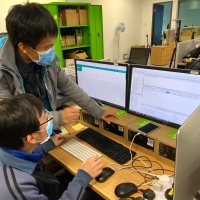- Archives
- 2023
Problem-Solving in Applied R&D
A technical R&D solution is not the most important element in an applied R&D proposal. In fact, the appropriately applied R&D solution is merely a supporting element. Then, what could be? Let’s think of the entire course of applied R&D work as a problem-solving process. Its starting point is the problem – a well-understood one. Thus, a well dissected and subsequently defined problem pertaining to the context of domain application is the key element to an applied R&D proposal. So, how can problems be approached?
Let’s start with how the potential applied R&D results fit under the big picture of the domain area and societal reality. Domain users, experts, and practitioners are usually able to tell what the pain points are in their current practices and environment. Is such given information enough to paint a complete picture of the domain issue? Other untold but probably relevant issues beyond those emphasized difficulties should be observed when researching for those pain points, current domain and even non-domain practices, countermeasures tried with or without technologies, etc. The observation process is also a needed exercise to dig deep into what the potential impact of the R&D results could be at different levels in the well thought of big picture. And this helps unveil the reason why the proposed R&D work is worth doing and being funded.
After flying high above ten thousand meters to survey the big picture, let’s come back down to the ground to break down the problem at hand. The general divide-and-conquer problem-solving strategy helps turn a perceived problem into a set of smaller independent and manageable sub-problems. Challenges in each sub-problem will be addressed by appropriate R&D methodologies as well as technological and system development works. A framework will then be designed to tie together all modularized proposed solutions for corresponding sub-problems as an integral proposed solution. Such an analytic process provides a solid foundation to explore viable R&D, technological, and system means with valid methodologies to address all defined issues. And this helps users and vetting committee gain a thorough understanding of what the issues really are and how they can be solved. And it helps build their confidence to support the work.
The process of understanding a problem together with helping others understand the problem is an art, rather than science. Different applied R&D practitioners are likely to come up with different views of the same problem. Then, is there a way to tell which one is better? Probably they are all equally good, as long as the thoroughly dissected and defined problem has already been more than halfway through solving itself.
LSCM - Dorbin Ng

